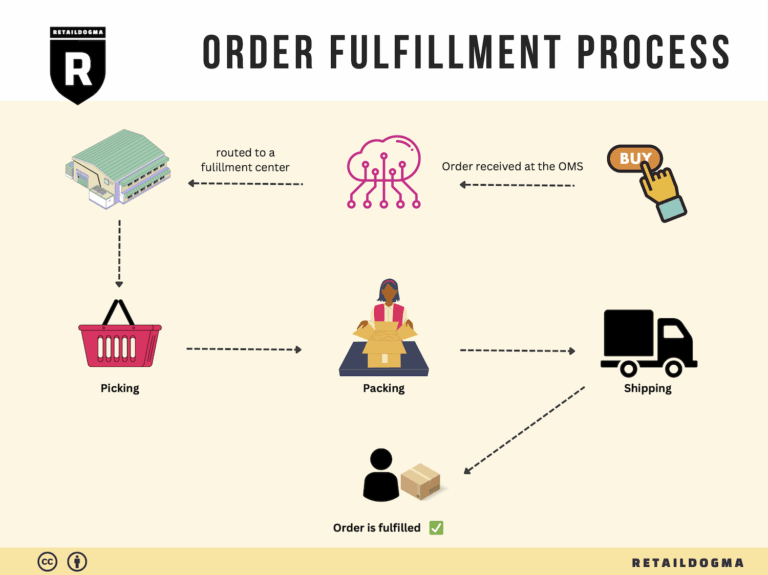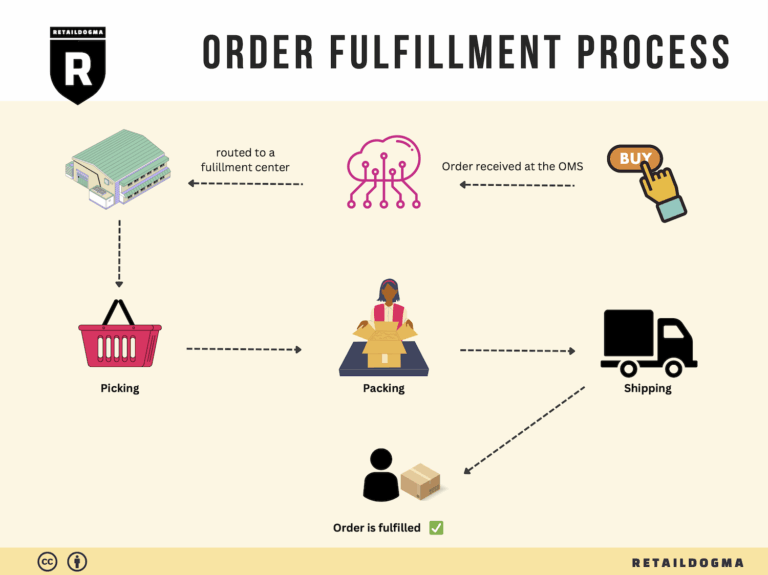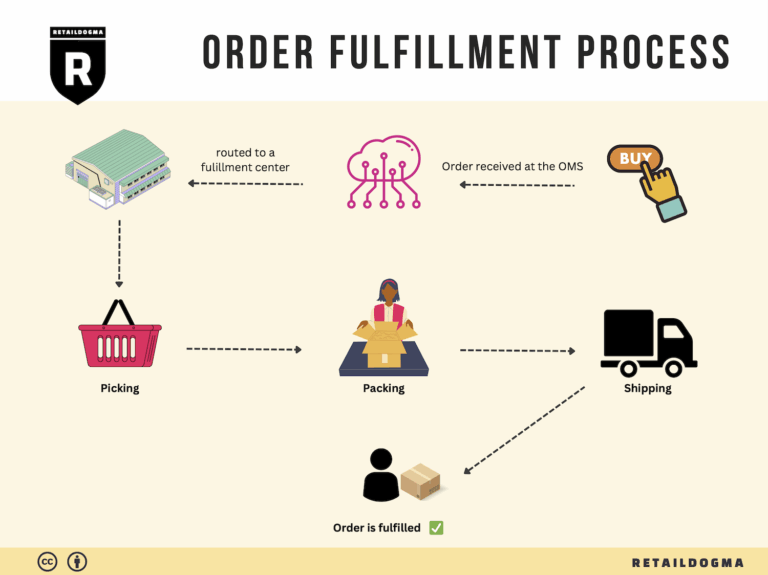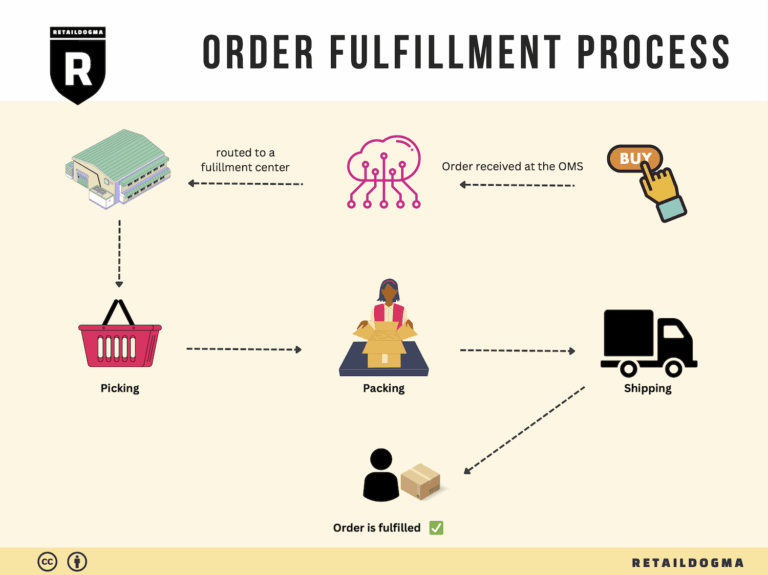What Is A Fulfillment Center? A Complete Guide (2025)
What is E-commerce Fulfillment? An Introduction for Growing Businesses
Introduction to E-commerce Fulfillment
For many growing online businesses, the excitement of attracting new customers can quickly turn into a daunting challenge when it comes to packing and shipping orders. As sales increase, so does the complexity of managing inventory, processing orders, and ensuring timely deliveries. This is where e-commerce fulfillment comes into play, providing a structured approach to getting products into the hands of customers efficiently and reliably.
E-commerce fulfillment is fundamentally the process of receiving, processing, and delivering orders to customers. It encompasses everything from warehousing and inventory management to packing and shipping. As your business scales, understanding the nuances of fulfillment becomes crucial to maintaining customer satisfaction and optimizing operational costs.
In this guide, we will delve into the various fulfillment models available to e-commerce businesses, including Third-Party Logistics (3PL) and Fulfillment by Amazon (FBA). Each model has its own set of advantages and can significantly impact your bottom line and customer experience. We will explore the core services provided by these models, such as inventory management, order processing, and shipping options.
Choosing the right fulfillment partner is another critical aspect that we will address. With numerous options available, it can be overwhelming to determine which provider aligns best with your business needs. We will offer practical tips on evaluating potential partners, considering factors such as reliability, scalability, technology integration, and customer service.
Pricing is often a concern for business owners looking to balance quality and cost-efficiency. We will break down the pricing structures commonly associated with different fulfillment options, helping you understand the long-term implications of your choices.
The ultimate goal of this guide is to empower you—business owners, operations managers, and entrepreneurs—to make informed decisions about your logistics strategy. By understanding e-commerce fulfillment and its various components, you can streamline your operations, enhance customer satisfaction, and position your business for sustained growth. Whether you are just starting out or looking to optimize your current processes, this guide will serve as a valuable resource in navigating the complex world of e-commerce fulfillment.
What You’ll Learn In This Guide
- What is E-commerce Fulfillment? An Introduction for Growing Businesses
- The Order Fulfillment Process: From ‘Buy’ Button to Customer’s Door
- Comparing Fulfillment Models: In-House vs. 3PL vs. Dropshipping
- A Deep Dive into Amazon FBA: Pros, Cons, and Who It’s For
- Core Services Offered by Fulfillment Centers
- How to Choose a Fulfillment Partner: A 6-Point Checklist
- Understanding Fulfillment Pricing: A Breakdown of Common Fees
- Frequently Asked Questions (FAQs) about Fulfillment
- Conclusion: Is Outsourcing Fulfillment the Right Move for Your Business?
- Important Disclaimer
The Order Fulfillment Process: From ‘Buy’ Button to Customer’s Door
1. Receiving Inventory
The order fulfillment process begins with receiving inventory, a crucial step that lays the foundation for efficient logistics. When products arrive at your fulfillment center, they must be checked against purchase orders to ensure accuracy. This involves verifying quantities, inspecting for damages, and confirming that the correct items have been received.
Importance: Proper inventory receipt is essential for maintaining accurate stock levels and preventing discrepancies. Accurate records help to avoid stockouts and overstock situations, both of which can hinder sales and customer satisfaction.
Key Term: SKU (Stock Keeping Unit) – Each product should have a unique SKU that allows for easy tracking throughout the fulfillment process. Implementing a robust SKU system helps streamline inventory management and ensures that products can be easily located.
2. Warehouse Storage
Once inventory is received and verified, it is stored in the warehouse. This step involves organizing products in a way that maximizes space and enhances picking efficiency. Items are often stored based on categories, sizes, or sales velocity, utilizing shelving, bins, or pallets as necessary.
Importance: Efficient warehouse storage reduces the time it takes to locate and retrieve items, which is vital for maintaining fast fulfillment speeds. A well-organized warehouse also minimizes the risk of errors during order picking, ultimately leading to improved customer satisfaction.
Key Term: ABC Analysis – This inventory categorization technique prioritizes products based on their importance and sales volume. “A” items are high-value and require close monitoring, while “C” items are lower-value and can be stored with less oversight. This method aids in optimizing storage space and resource allocation.
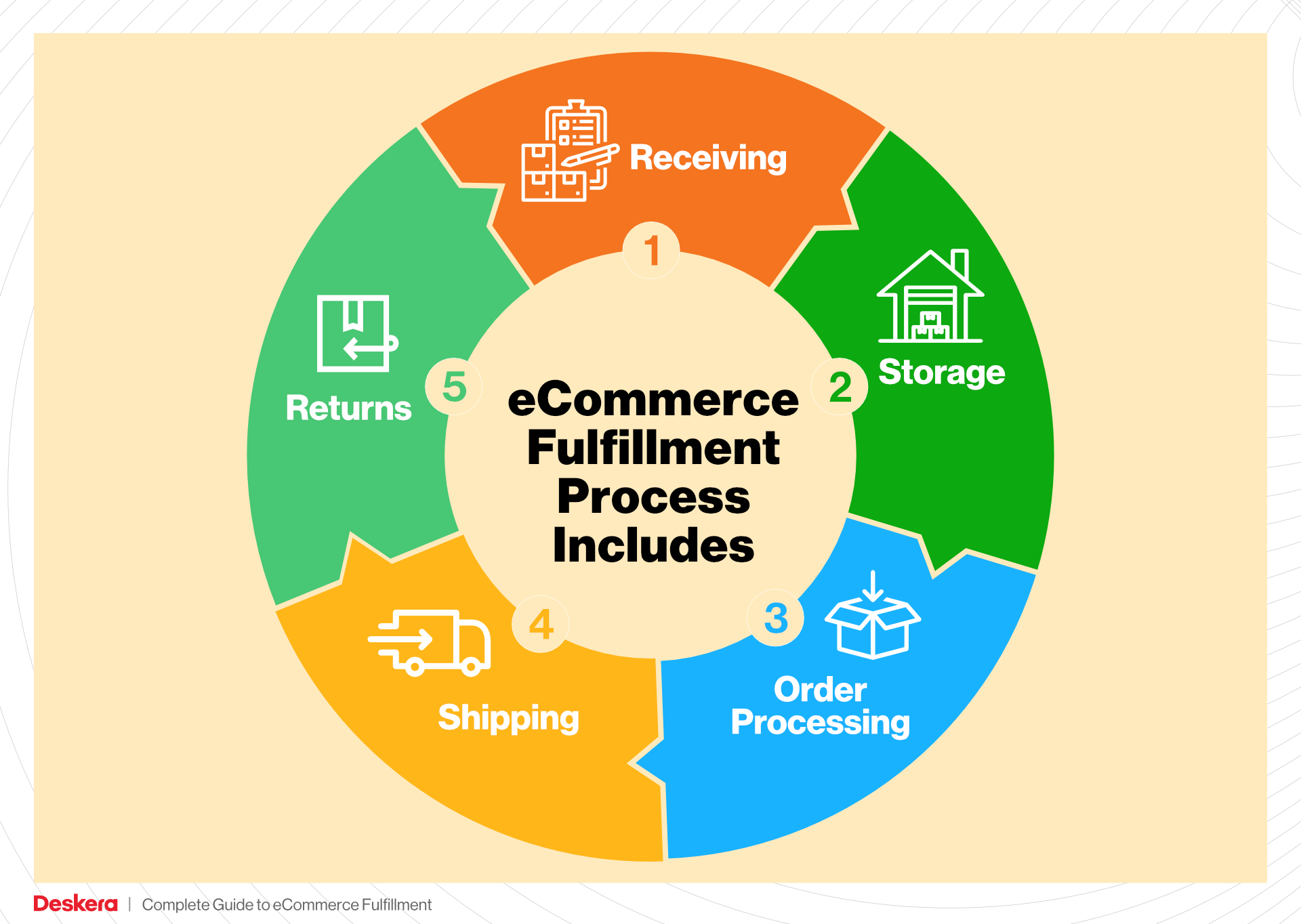
3. Order Picking
When a customer places an order, the fulfillment process shifts to order picking. This step involves retrieving the correct items from the warehouse based on the order details. Warehouse staff typically use pick lists or electronic picking systems to guide them through the picking process.
Importance: Accurate and efficient order picking directly affects the speed and accuracy of order fulfillment. Errors in this stage can lead to incorrect shipments, which can damage customer trust and result in costly returns.
Key Term: Pick Lists – These lists detail the items and quantities needed for each order, serving as a guide for warehouse staff. Utilizing optimized pick lists can enhance picking efficiency and reduce the time taken to fulfill orders.
4. Order Packing
After items have been picked, they move to the packing station, where they are prepared for shipping. This step involves checking the items for quality, packaging them securely, and labeling each package with the appropriate shipping information. Depending on the business model, packing may also include adding promotional materials or personalized messages.
Importance: Proper packing is vital for ensuring that products arrive safely at their destination. It protects items from damage during transit and enhances the overall customer experience. Additionally, thoughtful packing can reinforce branding and encourage repeat purchases.
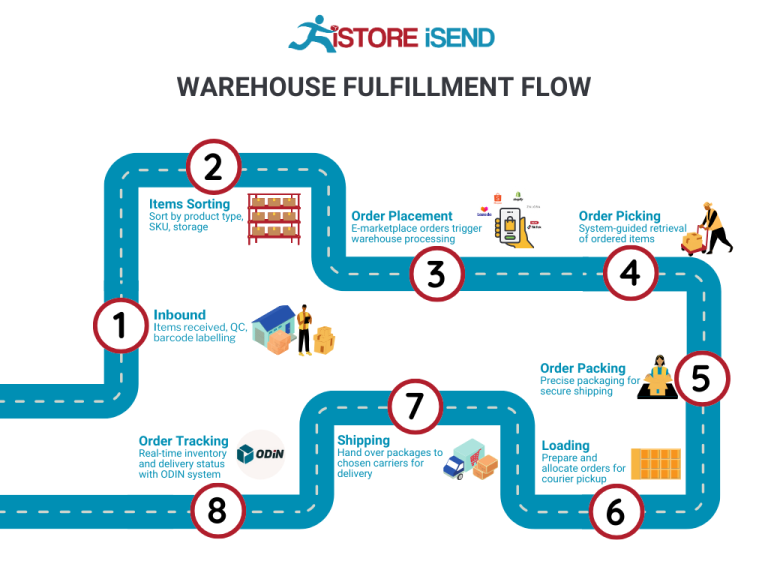
Key Term: Packing Slip – This document is included in the shipment and details the contents of the package. It serves as a receipt for the customer and a checklist for the fulfillment center to verify that all items are included.
5. Shipping & Delivery
The final step in the order fulfillment process is shipping and delivery. Once packages are packed, they are handed over to shipping carriers for delivery to the customer. This stage involves selecting the best shipping method based on factors such as cost, speed, and destination. Tracking information is usually provided to customers to keep them informed about their order’s status.
Importance: Timely and reliable shipping is critical for customer satisfaction. The speed of delivery can significantly impact repeat purchases and brand loyalty. Therefore, having a strong shipping strategy is essential for scaling an e-commerce business.
Key Term: Last-Mile Delivery – This term refers to the final step of the shipping process, where the package is delivered from a transportation hub to the final destination. Optimizing last-mile delivery can enhance delivery speed and reduce costs, making it a crucial focus area for e-commerce businesses.
In conclusion, understanding and optimizing each step of the order fulfillment process is essential for e-commerce businesses looking to scale. By ensuring accurate inventory management, efficient storage, precise order picking, careful packing, and reliable shipping, businesses can create a seamless experience that drives customer satisfaction and loyalty.
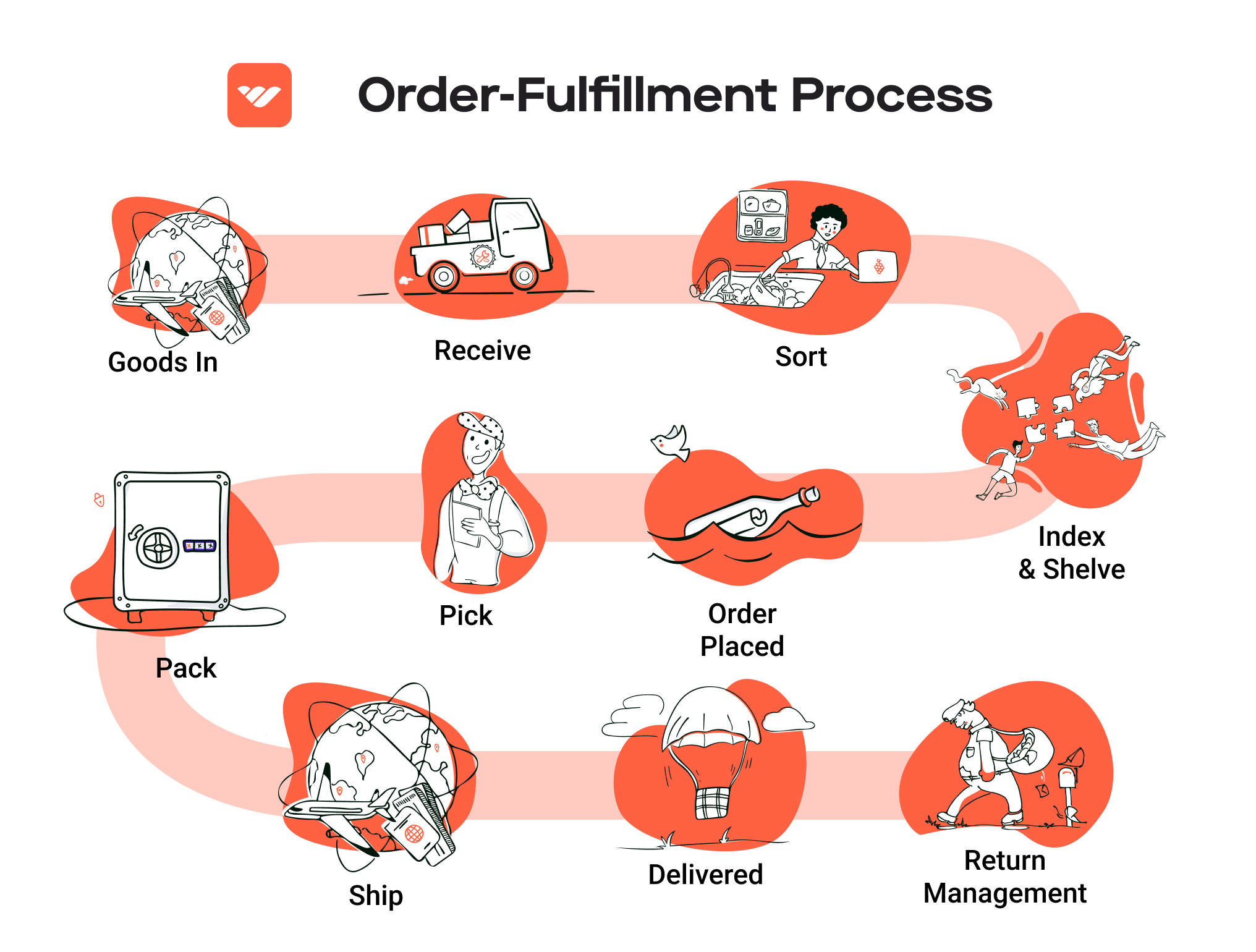
Comparing Fulfillment Models: In-House vs. 3PL vs. Dropshipping
Fulfillment Model Comparison
| Model | Who Handles Inventory | Best For (Business Stage) | Key Advantage | Key Disadvantage |
|---|---|---|---|---|
| In-House Fulfillment | The business itself | Established businesses with stable demand | Full control over inventory and operations | High overhead costs and labor requirements |
| Third-Party Logistics (3PL) | 3PL provider | Growing businesses seeking scalability | Reduced operational burden and scalability | Less control over inventory management |
| Dropshipping | Supplier or manufacturer | Startups and small businesses | Low upfront investment and no inventory risk | Slim profit margins and potential supplier issues |
In-House Fulfillment
In-house fulfillment refers to the process where a business manages its own inventory and logistics. This model is typically adopted by established companies that have a stable demand for their products. By maintaining control over inventory, businesses can ensure that they meet customer expectations regarding order accuracy and delivery speed. One of the significant advantages of in-house fulfillment is the ability to implement customized packing and branding, enhancing customer experience and brand loyalty. However, this model comes with notable disadvantages, including high overhead costs related to warehousing, staffing, and technology investments. Moreover, the labor-intensive nature of in-house operations can lead to challenges in scaling, especially during peak seasons when demand surges.
Third-Party Logistics (3PL)
Third-party logistics (3PL) providers handle the storage, picking, packing, and shipping of products on behalf of businesses. This model is ideal for growing companies that are looking to scale their operations without the burden of managing logistics themselves. A significant advantage of using a 3PL is the reduced operational burden; businesses can focus on core activities such as marketing and sales while leveraging the expertise and resources of the 3PL to manage fulfillment efficiently. Additionally, 3PLs often have established networks that can facilitate faster shipping and lower shipping costs. However, the trade-off is a potential loss of control over inventory management and fulfillment processes. Businesses may face challenges with communication and alignment, particularly if the 3PL does not fully understand the brand’s values or operational requirements.
Dropshipping
Dropshipping is a fulfillment model where the retailer does not keep products in stock but instead transfers customer orders directly to a supplier or manufacturer, who then ships the products directly to the customer. This model is particularly attractive for startups and small businesses due to its low upfront investment and minimal risk; retailers only pay for products after a sale is made, eliminating the need for inventory storage. Dropshipping also allows businesses to offer a wide range of products without the financial burden of purchasing inventory. However, dropshipping comes with significant disadvantages, such as slimmer profit margins and reliance on suppliers for product availability and shipping. If a supplier runs out of stock or fails to deliver on time, it can adversely affect customer satisfaction and brand reputation. Additionally, businesses have limited control over the quality of the products and shipping processes, which can lead to inconsistencies in customer experience.
Conclusion
In summary, the choice between in-house fulfillment, 3PL, and dropshipping depends on various factors, including business stage, operational capacity, and growth strategy. Each model presents unique advantages and challenges, and understanding these nuances is essential for e-commerce business owners and operations managers looking to optimize their fulfillment strategy. As businesses scale, they may find that a hybrid approach, combining elements of these models, can provide the flexibility and efficiency needed to meet evolving customer demands.
A Deep Dive into Amazon FBA: Pros, Cons, and Who It’s For
What is Fulfillment by Amazon (FBA)?
Fulfillment by Amazon (FBA) is a service provided by Amazon that allows sellers to store their products in Amazon’s fulfillment centers. When a customer places an order for a seller’s product, Amazon takes care of storage, packaging, and shipping, as well as handling customer service and returns. This service enables sellers to leverage Amazon’s vast logistics network, ensuring faster delivery times and a better shopping experience for customers.
Sellers using FBA benefit from Amazon’s extensive reach, as their products can be listed with the “Fulfilled by Amazon” logo, making them eligible for Amazon Prime and other customer-centric services. This program is particularly attractive for e-commerce businesses seeking to scale quickly, as it minimizes the complexities of order fulfillment while maximizing exposure to a large customer base.
How FBA Works
-
Set Up Your FBA Account: Sellers need to create an Amazon Seller account and enroll in the FBA program. This includes providing information about their business, tax details, and payment methods.
-
Prepare and Ship Products: Sellers prepare their products according to Amazon’s guidelines, which include labeling and packaging requirements. Once prepared, they ship their inventory to designated Amazon fulfillment centers.
-
Storage: Amazon stores the products in its warehouses. Sellers can monitor their inventory levels through the Amazon Seller Central dashboard.
-
Order Processing: When a customer places an order, Amazon picks, packs, and ships the product on behalf of the seller. This process is typically very fast, often resulting in same-day or next-day delivery, especially for Prime members.
-
Customer Service and Returns: Amazon also handles customer inquiries, complaints, and returns. This allows sellers to focus on other aspects of their business, such as marketing and product development.
-
Payment: After the sale, sellers receive payment minus Amazon’s fees, which are based on the total sales price, shipping, and any applicable taxes.
Pros of Fulfillment by Amazon
1. Prime Eligibility
One of the most significant advantages of FBA is that products become eligible for Amazon Prime, which attracts millions of loyal customers who prefer fast and free shipping options. This can lead to increased sales and visibility.
2. Customer Trust
Products fulfilled by Amazon often gain more trust from consumers. The backing of Amazon’s customer service and return policy enhances credibility, leading to higher conversion rates.
3. Multi-Channel Fulfillment
FBA can also be used for multi-channel fulfillment, allowing sellers to fulfill orders from other sales channels (like their own website or eBay) using Amazon’s logistics capabilities. This can streamline operations and provide a cohesive fulfillment experience.
4. Time-Saving
Outsourcing fulfillment to Amazon allows sellers to focus on product development, marketing, and other strategic initiatives instead of logistics. This can significantly reduce operational burdens.
5. Scalability
FBA provides a scalable solution that can accommodate growing businesses. As order volumes increase, sellers can rely on Amazon’s infrastructure without the need for significant investments in warehousing and staffing.
Cons of Fulfillment by Amazon
1. High Fees
FBA fees can add up quickly. Sellers pay for storage, fulfillment, and additional services, which can significantly impact profit margins. Understanding the fee structure is essential for maintaining profitability.
2. Strict Inventory Rules
Amazon has stringent inventory management policies, including requirements for labeling and packaging. Non-compliance can lead to additional fees or even removal of inventory from Amazon’s warehouses.
3. Commingling Risks
When using FBA, sellers’ products may be commingled with those of other sellers. This can lead to issues such as receiving returns for products that are not yours or facing challenges with counterfeit items. Maintaining brand integrity can be more complex in this scenario.
4. Limited Control
Sellers relinquish some control over the fulfillment process. This includes aspects like packaging, branding, and customer interaction, which can dilute the brand experience.
5. Inventory Management Challenges
Managing inventory levels across multiple fulfillment channels can be challenging. Sellers need to ensure they have enough stock to meet demand while avoiding long-term storage fees for excess inventory.
Who is FBA Best For?
Fulfillment by Amazon is particularly well-suited for:
-
Small to Medium-Sized Businesses: Sellers who lack the infrastructure or resources to manage their own logistics can benefit from Amazon’s established fulfillment network.
-
Startups: New e-commerce businesses can quickly gain access to a vast customer base without the need for upfront investments in warehousing and logistics.
-
Sellers with High Volume: Businesses that expect to sell high volumes of products can leverage FBA to scale efficiently without overwhelming their operations.
-
Businesses Focused on Growth: Companies looking to expand rapidly can use FBA to enhance their reach and improve customer satisfaction without the complexities of managing fulfillment themselves.
-
Brands Seeking Trust and Credibility: Sellers wanting to enhance their brand’s credibility and customer trust can benefit from Amazon’s reputation and customer service.
In conclusion, Fulfillment by Amazon offers a robust solution for e-commerce businesses looking to streamline their logistics and scale their operations. However, it’s crucial for sellers to weigh the pros and cons carefully to determine if FBA aligns with their business goals and strategies.
Core Services Offered by Fulfillment Centers
Inventory Management & Warehousing
Inventory management and warehousing are foundational services provided by fulfillment centers. This involves not only storing products but also overseeing the stock levels to ensure that businesses have the right amount of inventory on hand to meet customer demand without overstocking.
What It Is: Fulfillment centers utilize sophisticated inventory management systems that track stock levels in real-time. This includes monitoring incoming shipments, managing stock counts, and organizing products in a way that maximizes efficiency during the picking process.
Benefits for E-commerce Businesses: Effective inventory management helps e-commerce businesses avoid stockouts and overstock situations. By maintaining optimal inventory levels, businesses can fulfill orders promptly, improving customer satisfaction and loyalty. Additionally, accurate inventory data can provide insights into sales trends, allowing businesses to make informed decisions about reordering and product assortment. This reduces the risk of dead stock, ultimately saving costs associated with unsold merchandise.
Pick and Pack Services
Pick and pack services are at the heart of the fulfillment process. This service entails selecting products from inventory and packing them for shipment to customers.
What It Is: Fulfillment centers employ trained staff and automated systems to efficiently pick items from shelves and pack them according to specific order requirements. This process often includes quality checks to ensure that the right items are selected and packed securely to prevent damage during transit.
Benefits for E-commerce Businesses: Utilizing pick and pack services allows e-commerce businesses to streamline their order fulfillment process. By outsourcing this function, businesses can focus on core activities such as marketing and product development. Moreover, efficient pick and pack operations lead to faster shipping times, which are critical for customer satisfaction in the competitive e-commerce landscape. This service also enables scalability, allowing businesses to handle increased order volumes during peak seasons without the need for additional labor or infrastructure.
Kitting and Assembly
Kitting and assembly refer to the process of combining multiple products into a single package or kit, often for promotional purposes or to create a bundled offering.
What It Is: Fulfillment centers can assemble kits that may include various items packaged together, such as gift sets or subscription boxes. This service may also involve light assembly tasks, like putting together furniture or devices that require some assembly before shipping.
Benefits for E-commerce Businesses: Kitting and assembly services provide an opportunity for e-commerce businesses to enhance their product offerings and improve customer experience. Bundling products can increase average order value, as customers may be more inclined to purchase a kit that offers perceived savings or convenience. Additionally, these services can help businesses differentiate themselves in a crowded market by offering unique product combinations that appeal to specific customer segments. Streamlining this process through a fulfillment center allows businesses to save time and resources while maintaining focus on their core operations.
Returns Management (Reverse Logistics)
Returns management, or reverse logistics, is a critical service that encompasses handling returns from customers and processing them efficiently.
What It Is: Fulfillment centers manage the entire returns process, from receiving returned items to inspecting and restocking them. This service often includes issuing refunds or exchanges and managing any necessary repairs or refurbishments.
Benefits for E-commerce Businesses: An effective returns management system is vital for maintaining customer trust and satisfaction. By outsourcing this process to a fulfillment center, e-commerce businesses can ensure that returns are handled quickly and efficiently, reducing the burden on their customer service teams. A streamlined returns process not only enhances customer loyalty but also improves overall operational efficiency. Furthermore, analyzing returns data can provide valuable insights into product quality and customer preferences, enabling businesses to make better product decisions and improve their offerings.
In summary, partnering with a fulfillment center allows e-commerce businesses to leverage specialized services that enhance operational efficiency, customer satisfaction, and ultimately, profitability. By utilizing inventory management, pick and pack services, kitting and assembly, and returns management, businesses can focus on scaling their operations while ensuring a seamless experience for their customers.
How to Choose a Fulfillment Partner: A 6-Point Checklist
Location & Warehouse Network
Importance:
The geographical location of your fulfillment partner’s warehouses can significantly affect shipping times and costs. A strategically located warehouse network can help you reach your customers faster, reduce shipping costs, and improve customer satisfaction.
Questions to Ask:
– Where are your warehouses located? How does this align with my target customer demographics?
– Do you have multiple locations to enable regional distribution?
– What is your average shipping time to my primary markets?
– How do you handle logistics in peak seasons or during unexpected surges in demand?
Technology & Integrations
Importance:
A modern fulfillment partner should leverage technology to streamline operations, enhance accuracy, and provide real-time visibility into inventory and order status. Compatibility with your e-commerce platform and other business systems is also critical for seamless operations.
Questions to Ask:
– What order management systems and technologies do you use?
– Can your systems integrate with my e-commerce platform (e.g., Shopify, WooCommerce, Amazon)?
– Do you provide real-time tracking and reporting capabilities?
– How do you handle inventory management and updates?
Specializations (e.g., Cold Storage, Oversized Items)
Importance:
Not all fulfillment partners are equipped to handle specific types of products. If your business involves specialized items such as perishables, oversized goods, or hazardous materials, it’s vital to choose a partner with the necessary facilities and expertise.
Questions to Ask:
– Do you have the capability to handle my specific product types (e.g., cold storage, oversized items)?
– What certifications do you hold for specialized storage or handling?
– How do you ensure compliance with regulations for my product categories?
– Can you provide case studies or references from similar clients?
Scalability & Capacity
Importance:
As your business grows, your fulfillment needs will change. A suitable fulfillment partner should have the ability to scale operations quickly and efficiently without compromising service quality. This ensures that you can meet increased demand without disruptions.
Questions to Ask:
– What is your current capacity, and how do you handle scaling during peak seasons?
– Can you support my growth plans over the next few years?
– What are your contingency plans for unexpected spikes in order volume?
– How do you manage storage and fulfillment space as business needs evolve?
Pricing and Contracts
Importance:
Understanding the pricing structure and contract terms is crucial to avoid unexpected costs and ensure you are getting value for your investment. Transparent pricing models help you budget accurately and assess the overall cost-effectiveness of your fulfillment solution.
Questions to Ask:
– What is your pricing structure? Are there any hidden fees I should be aware of?
– How do you charge for storage, pick and pack, and shipping?
– What are the terms of the contract? Are there any long-term commitments?
– Can you provide a sample invoice to understand the billing process?
Customer Support & Reviews
Importance:
Exceptional customer support is essential for addressing issues promptly and maintaining smooth operations. Evaluating reviews and testimonials can provide insights into the partner’s reliability and service quality.
Questions to Ask:
– What levels of customer support do you offer? Is it available 24/7?
– How do you handle customer service inquiries related to fulfillment?
– Can you provide references or testimonials from current clients?
– What is your process for resolving fulfillment errors or issues?
Conclusion
Choosing the right fulfillment partner is a critical decision that can significantly impact your e-commerce business’s success. By carefully evaluating potential partners against this checklist, you can ensure that you select a provider who aligns with your business goals, enhances customer satisfaction, and supports your growth strategy. Take the time to ask these questions and assess the responses to make an informed choice that will serve your business well into the future.
Understanding Fulfillment Pricing: A Breakdown of Common Fees
Initial Setup Fees
Initial setup fees are one-time charges that e-commerce businesses incur when they first engage with a fulfillment provider. These fees cover the costs associated with onboarding, including inventory setup, system integration, and training. Depending on the complexity of your operation and the fulfillment center’s requirements, these fees can vary significantly.
- Calculation: Initial setup fees may be flat-rate or based on the number of SKUs (stock-keeping units) you plan to store and fulfill. For instance, a fulfillment center might charge a $500 flat fee for basic onboarding, while others may charge $50 per SKU for setup. It’s essential to clarify what services are included in this fee, such as software integration or inventory management training.
Receiving Fees
Receiving fees are charged when your inventory arrives at the fulfillment center. This fee compensates the warehouse for unloading, inspecting, and entering your products into their inventory management system.
- Calculation: Receiving fees can be structured as a per-unit fee or a flat fee based on the shipment size. For example, a fulfillment center might charge $0.30 per item received or a flat fee of $100 for shipments over a certain size (e.g., 1,000 units). Some providers may also charge additional fees for special handling or inspection processes.
Storage Fees (per pallet/bin)
Storage fees are ongoing charges for the space your inventory occupies in the fulfillment center. These fees can vary based on the size and type of storage you require—whether it’s pallet storage for bulk items or bin storage for smaller products.
- Calculation: Storage fees are typically calculated on a monthly basis and can be charged per pallet or per bin. For example, a fulfillment center might charge $10 per pallet per month or $5 per bin per month. Some facilities also implement tiered pricing, where the cost per pallet decreases as you store more pallets. It’s crucial to understand how your products are categorized and what storage options are available to optimize costs.
Pick & Pack Fees (per item/order)
Pick and pack fees are charged for the process of selecting items from storage (picking) and preparing them for shipment (packing). This fee is essential as it directly impacts the efficiency of order fulfillment.
- Calculation: Pick and pack fees can be structured in various ways. Some fulfillment centers charge a flat fee per order (e.g., $2 per order) regardless of the number of items, while others may charge based on the number of items picked (e.g., $0.50 per item picked). Additionally, packing materials (like boxes and packing peanuts) may incur extra charges. Understanding the specifics of these fees is crucial, as they can significantly affect your overall fulfillment costs.
Shipping Fees
Shipping fees are one of the most critical components of fulfillment pricing, as they directly influence delivery speed and customer satisfaction. These fees encompass the costs associated with transporting your products to customers.
- Calculation: Shipping fees can vary based on several factors, including the destination, shipping method (standard, expedited, etc.), weight and dimensions of the package, and the carrier used. Most fulfillment centers offer shipping discounts through partnerships with carriers, which can help reduce costs. It’s advisable to evaluate different shipping options and negotiate rates based on your shipping volume to achieve the best pricing.
Tips for Getting an Accurate Quote
-
Clarify Your Needs: Before reaching out to fulfillment centers, have a clear understanding of your inventory volume, order frequency, and specific services required (e.g., kitting, labeling).
-
Request Detailed Pricing: Ask for a breakdown of all potential fees, including any additional costs for special services. This transparency will help you make informed comparisons between providers.
-
Consider Long-term Costs: While initial setup fees might seem high, consider the long-term storage and shipping fees. A provider with lower initial costs but higher ongoing fees may not be the best choice.
-
Negotiate Terms: Don’t hesitate to negotiate pricing and terms. Many fulfillment centers are willing to offer discounts based on your projected order volume.
-
Review Contracts Carefully: Always read the fine print of contracts to ensure you understand all terms, including any potential price increases or hidden fees.
By understanding these common fulfillment pricing models and following these tips, e-commerce businesses can make more informed decisions that align with their operational goals and budget constraints.
Frequently Asked Questions (FAQs) about Fulfillment
1. What is direct fulfillment?
Direct fulfillment refers to the process of shipping orders directly to consumers from a seller’s inventory, rather than through a retailer or intermediary. This model allows businesses to manage their own inventory and customer relationships while outsourcing the logistics of order processing and shipping to third-party logistics (3PL) providers if desired.
2. How does direct fulfillment differ from drop shipping?
While both direct fulfillment and drop shipping involve shipping products directly to customers, the key difference lies in inventory ownership. In direct fulfillment, the seller owns the inventory and is responsible for order fulfillment, whereas in drop shipping, the seller does not own the inventory and relies on a supplier to ship products to customers on their behalf.
3. What is a 3PL, and how does it relate to direct fulfillment?
A 3PL (third-party logistics provider) is a company that offers logistics services to businesses, including warehousing, order fulfillment, and shipping. In the context of direct fulfillment, a 3PL can handle the picking, packing, and shipping of orders on behalf of a business while the business retains ownership and control over its inventory.
4. What are the benefits of using direct fulfillment?
Direct fulfillment provides several advantages, including:
– Control Over Inventory: Businesses maintain ownership of their stock, allowing for better inventory management.
– Customer Experience: Sellers can customize packaging and messaging, enhancing brand loyalty.
– Cost Efficiency: Potentially lower fulfillment costs compared to other methods, especially with a 3PL.
– Flexibility: Ability to manage stock levels and respond quickly to changes in demand.
5. How much do fulfillment services cost?
The cost of fulfillment services can vary widely based on several factors, including the size and weight of products, order volume, storage fees, and additional services like kitting or returns processing. Businesses should seek quotes from multiple providers to find a solution that fits their budget and operational needs.
6. Who can benefit from direct fulfillment?
Direct fulfillment is ideal for e-commerce businesses that sell directly to consumers, particularly those that require greater control over their inventory and customer experience. This model is also beneficial for companies looking to diversify their distribution channels and mitigate risks associated with relying solely on platforms like Amazon.
7. What is the role of fulfillment centers in direct fulfillment?
Fulfillment centers are specialized warehouses that handle the storage, packing, and shipping of products for e-commerce businesses. In direct fulfillment, these centers enable businesses to efficiently manage their inventory and fulfill orders quickly without the need to maintain their own warehouse.
8. How can direct fulfillment improve customer satisfaction?
By utilizing direct fulfillment, businesses can ensure faster shipping times, accurate order processing, and personalized packaging. This leads to a better overall customer experience, which can enhance brand loyalty and increase repeat purchases.
9. What should I consider when choosing a fulfillment partner?
When selecting a fulfillment partner, consider the following:
– Reputation and Reliability: Research customer reviews and case studies.
– Technology Integration: Ensure they offer systems compatible with your e-commerce platform.
– Location: Proximity to your customer base can affect shipping times and costs.
– Service Offerings: Look for additional services like returns management and inventory tracking.
10. What challenges might I face with direct fulfillment?
Challenges in direct fulfillment can include managing inventory levels, ensuring timely shipping, and maintaining quality control over packaging. Additionally, businesses must be prepared to handle customer service inquiries related to shipping and order issues, which can require additional resources and planning.
Conclusion: Is Outsourcing Fulfillment the Right Move for Your Business?
Evaluating the Benefits of Outsourcing Fulfillment
In the ever-evolving landscape of e-commerce, outsourcing your fulfillment can be a strategic move that enhances your operational efficiency and supports scalable growth. By partnering with a fulfillment service, businesses can save valuable time that would otherwise be spent managing logistics, allowing you to focus on core competencies like product development and customer engagement. Fulfillment partners bring specialized expertise that can improve order accuracy and shipping speed, directly impacting customer satisfaction and retention.
One of the standout advantages of outsourcing fulfillment is scalability. As your business grows, so too do your fulfillment needs. Third-party logistics (3PL) providers are equipped to handle fluctuating order volumes, ensuring that you can meet customer demand without the burden of investing in additional warehouse space or hiring seasonal staff. This adaptability is crucial for maintaining your competitive edge in a crowded market.
However, not all fulfillment partners are created equal. Selecting the right provider is pivotal for your business’s success. Look for a partner that aligns with your brand values, has a proven track record of reliability, and offers flexible solutions tailored to your unique operational needs. A strong partnership can serve as a catalyst for growth, allowing you to navigate challenges and seize opportunities effectively.
Take Action: Audit Your Shipping Process
As you contemplate the future of your e-commerce operations, consider conducting an audit of your current shipping and fulfillment processes. Assess whether your existing setup meets the demands of your business model and customer expectations. Identifying inefficiencies or bottlenecks can guide you in determining if a fulfillment partner is the right next step. By leveraging the expertise and resources of a 3PL, you can position your business for sustainable growth and enhanced customer satisfaction in the competitive e-commerce landscape.
Important Disclaimer
⚠️ Important Disclaimer
The information in this guide is for educational purposes. Fulfillment services, pricing, and platform features change frequently. Always conduct your own due diligence and consult with providers directly before making business decisions.

